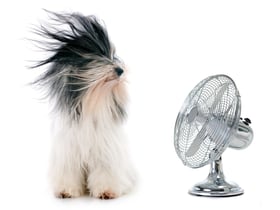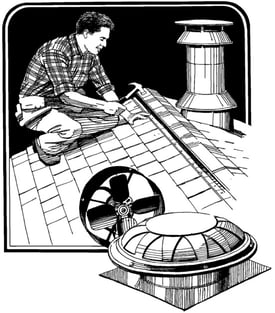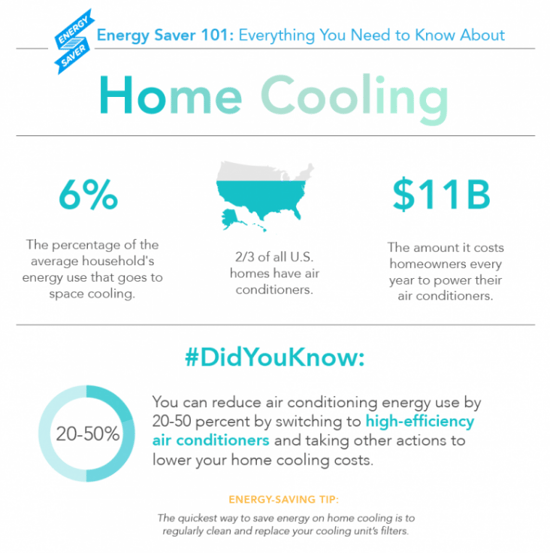HVAC systems as well as insulation, windows, doors and siding have improved tremendously over the past 50 years, rendering many older homes obsolete. The situation is most critical in the winter when heat loss can cost lives, or during the summer when every cubic foot of coolness brings potential comfort.

When homeowners can’t identify why their house isn’t cooling properly, a cadre of experts such as energy auditors, HVAC professionals and building materials managers stand ready to improve conditions for people and pets while increasing their own profits.
Knowing that effective cooling methods vary according to design, structural components and devices, the Department of Energy has compiled a list of HVAC suggestions for enhancing air conditioning systems.
Ventilation for Cooling
Ventilation is the most energy-efficient way to cool a home according to energy.gov. Of course, natural ventilation is free, but works best with open-air designs. Window placement can make all the difference in a large house since a chimney effect can be created by wind pushing air through lower windows and pulling it up and out of upper story openings via convection.
Ideal conditions: Climates with cool nights and regular breezes, cathedral ceilings with operable skylights or windows on the top and bottom floors.
Fans for Cooling
Circulating fans include ceiling, table and floor fans as well as those mounted to poles or walls, but ceiling fans are the most effective of the bunch. Designed to cool people rather than rooms, ceiling fans can allow for thermostats to be raised by 4 degrees F without disrupting comfort.
Ideal conditions: Place in each room with ceilings at least eight feet high. Works best when the blades are 10 to 12 inches below the ceiling and 7 to 9 feet above the floor.
Whole-house Fans
 In many climates, a whole-house fan can take the place of an air conditioner and should provide comfortable living even in hot weather when combined with circulating fans. Requiring an upper area such as an attic, air is exhausted through the roof, providing 30 − 60 air changes per hour.
In many climates, a whole-house fan can take the place of an air conditioner and should provide comfortable living even in hot weather when combined with circulating fans. Requiring an upper area such as an attic, air is exhausted through the roof, providing 30 − 60 air changes per hour.
Ideal conditions: Coastal areas with cool nights and mornings; provide as much vent area as possible; if necessary, increase attic ventilation to optimize efficiency.
Evaporation Cooling
“Swamp coolers” provide a steady stream of fresh air into a house by directing air over water-saturated pads. The resulting evaporation process allows cool air to enter the room and warm air to be pushed out through an open window.
Ideal conditions: Dry climates and houses not concerned with water usage. Requires routine monthly maintenance to the pads, filters, reservoir and pump.
Air Conditioning
Five percent of all electricity produced in the U.S. comes from air conditioning. Air conditioner options include room air conditioners, ductless mini-split air conditioners, and central air conditioning (AC). Transferring heat from the interior of the home to the exterior through energy, air conditioners are whole-house cooling solutions. A balance of room and central AC can reduce costs and emissions.
Energy.gov estimates that American homeowners pay $11B annually to maintain AC which results in roughly 100 million tons of carbon dioxide released into the air each year.
Ideal conditions: Most air conditioners operate at less than maximum efficiency, presenting potential energy-saving opportunities. New air conditioning units are far more efficient than earlier models. Dehumidifying heat pipes can help an air conditioner remove humidity and more efficiently cool the air. For more details and solutions, visit the Energy Saver 101 infographic on home cooling.

Radiant Cooling
Radiant systems cool floors or ceilings by absorbing the heat radiated from the rest of the room. Most radiant cooling applications in North America have been based on aluminum panels suspended from the ceiling through which chilled water is circulated. To be effective, the panels must be maintained at a temperature very near the dew point within the house, and the house must be kept dehumidified, often with an auxiliary air-conditioner which could increase the expense of cooling.
Ideal conditions: Arid Southwest, adobe homes, dry, non-humid climates.
When it comes to heat relief, building materials experts can offer in-store and in-home solutions to families. But what about purchasing relief? CrossCheck partners with the building materials industry to provide Multiple Check for customers who want to improve their HVAC system today and take a little extra time to pay it off. They write 2-4 checks deposited by you within 30 days, getting them out of the heat and helping you guarantee the sale. To discover how this win-win solution can increase sales at your business, download the free guide.


